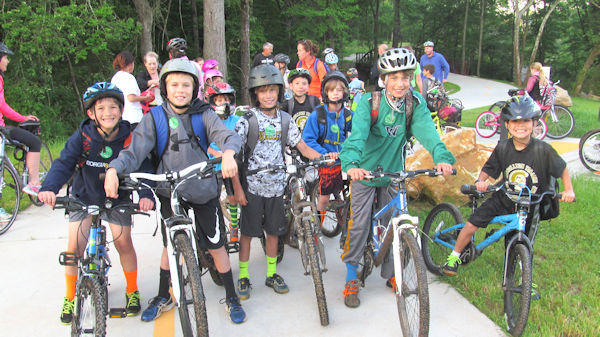 Students are often very sedentary — from riding the bus to school and sitting in class to spending afternoons in front of the TV and evenings doing homework.
Students are often very sedentary — from riding the bus to school and sitting in class to spending afternoons in front of the TV and evenings doing homework.
Many kids are not getting enough physical activity, according to the National Youth Fitness Survey released by the Centers for Disease Control and Prevention (CDC) in 2014.
Only 1 in 4 kids from age 12 to 15 gets the recommended hour or more of moderate to vigorous activity, the survey found. It can be tough to squeeze in exercise, but there are ways to make it part of your kid’s daily routine.
Walking or biking to school is a fun and efficient way for kids to get more exercise.
Tanner Health System’s Get Healthy, Live Well initiative teamed up with parents and several local partners to form a task force dedicated to creating safe routes for biking and walking to school.
The “Safe Routes to School” task force worked collaboratively to create infrastructure and policies to allow for walking and biking to school. Bike racks were installed, safe crossing points were established and new arrival/dismissal policies were created.
“Kids spend so much time indoors sitting still,” said Wendy Alba, a mother of four who serves on the task force. “Walking and biking to school is a fun way to help establish healthy habits and fight the obesity epidemic and all of the health problems that go along with it.”
There are also ways to incorporate more physical activity into the school day — beyond recess and PE.
Tanner Health System’s Get Healthy, Live Well initiative has partnered with Georgia Shape to bring “Power Up for 30” into schools.
Tanner has hosted “Power Up for 30” training sessions for local teachers to help them incorporate 30 minutes of physical activity (beyond gym class) into the school day.
Take 10!, a program that boosts physical activity in elementary schools, is one of many ways that teachers can do that. Take 10! offers evidence-based plans for specific grades that combine academic subjects with 10-minute bursts of physical activity. For example, first-graders can do lunges during spelling (a lunge for each letter of the word) or jog in place while practicing math.
Research suggests that students who participate in classroom-based physical activity not only improve their physical health, but also perform better academically, says Dr. Brian Mosier, assistant professor at University of West Georgia.
“Research continues to show that students who are physically active throughout the day are able to pay better attention, have less behavior disruption and are able to focus more on their school work,” Mosier said.
At home, parents can encourage kids to take a quick break from homework (or screen time) to go for a bike ride, shoot hoops, walk the dog or even dance around the room to boost their energy level and get some heart-healthy physical activity.
For families who play sports, experts suggest bringing a football, soccer ball or even a Frisbee to games and practices for siblings who are stuck watching from the sidelines.
On the weekends, parents can plan a hike, try indoor rock-climbing or trampolines or even sign up for a charity walk.
It takes a little effort to keep kids active, but it’s well worth it.
“Physically active people have higher levels of health-related fitness, a lower risk of developing a number of disabling medical conditions and lower rates of various chronic diseases than people who are inactive,” said the Physical Activity Guidelines Advisory Committee Report from the Department of Health and Human Services.
Learn more about getting and staying fit by selecting the “Get Fit” menu at www.GetHealthyLiveWell.org.